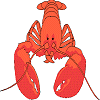|
Testimony to the Marine Resources
Committee on LD 170: An Act to Permit the Landing of Lobsters
Harvested by Methods Other Than Conventional Traps
By: Angelo Ciocca, Nova Seafood
My name is Angelo Ciocca, president of Nova
Seafood, Portland. I would like to thank the sponsors of LD170 for
making this discussion possible.
Nova Seafood is a seafood processor and wholesaler
specializing in fresh North Atlantic species. I have been involved
in the Maine seafood industry since 1981. Nova has called Portland
home since its formation in 1990. From the beginning, Nova has been
very dependent on the Portland Fish Exchange for a steady supply of
millions of pounds of high quality fish each and every year.
Then came 2006. During 2006, Nova Seafood bought
1,115,000 pounds of fish LESS from the PFE than in 2005. That is a
decrease of 44% in one year. In dollar terms, this decrease
translates to a revenue loss of more than $2.5 million dollars to
Nova, and the corresponding losses in wages, transportation,
packaging, taxes, etc.
Most importantly, the lack of a steady flow of
product causes our customers, both in and out of state, to turn
elsewhere for the fish their customers are demanding. Where do they
turn? Where must they turn? To Massachusetts.
As of 2004, statistics show that Massachusetts
already has claimed more than 72% of the New England ground fish
landings. I believe they have exceeded the 80% mark in 2006, and are
fast approaching the 90% mark. The Maine ground fish industry cannot
and will not survive with 10, or even 20% of the total New England
ground fish landings.
The state cannot allow this to happen. You might
ask the question—Why didn’t Nova buy the missing 1.15 million pounds
of fish? The answer is that the fish was not available on the floor
of the PFE. The PFE shortfall in 2006 vs. 2005 was 7.5 million
pounds. Much of this fish ended up in Mass ports, in another buyer’s
hands.
Occasionally, buyers in Maine will be offered
product second hand, always at higher prices. The time delay in
receiving the product from out of state, plus the trucking expense
to bring the fish back to Maine, puts us at a huge competitive
disadvantage with Mass seafood companies. We need fish to be
unloaded at the PFE.
The previous speakers have addressed the fine
points of LD170. As you can see, the authors of this bill have
incorporated many safeguards for the trap fishermen’s benefit, such
as the 40+ mile buffer zone. Of course, the Maine boats will follow
the federal regulations of 100 count lobsters per day, with a 500
count maximum per trip.
Under LD170, draggers will land less than 1% of
the annual Maine lobster trap fisheries catch. This bill will not
damage the Maine lobster fishery at all, but passage of this bill is
the ONLY hope for the Maine ground fish industry.
I realize that the trap fishermen are “afraid” of
what the draggers will do to their lobsters. I ask you to read the
bill again with an open mind, and you will see that neither the
inshore or offshore lobster fishery will not be harmed by this bill.
One last bit of information. I am in a very unique
situation. I am a 50% owner of an AREA 3 lobster boat, yet I am
speaking in favor of LD170. If I had any doubts about what this bill
would do to the AREA 3 lobster population, I would not be here
today. I support LD170.
Thank you for your time. |
